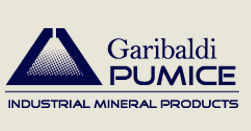About Pumice
Pumice is a textural term for volcanic rock and is defined as an excessively cellular, glassy lava1 (i.e. roughly speaking it is porous and without a crystal structure). It can vary widely in its physical characteristics and the term often causes confusion as it is used for related materials such as scoria.
Pumice is a type of volcanic igneous rock. Volcanic rocks are classified according to their mineral composition or chemistry. One method of classifying volcanic rocks is on the basis of their silica (SiO2) content. In order of decreasing silica content there is rhyolite (> 68% silica), dacite (63-68% silica), andesite (52-63% silica) and basalt (48-52% silica)2. With most lava rock, lighter weight is associated with greater silica content and therefore reduced hardness.
Pumice is a term related to rock texture not mineralogy. Pumice has cells or vesicles (i.e. it is porous) due to the gases being released from the molten rock as it erupts from a volcano and trapped as the rock solidifies on cooling. All rock types listed above can produce pumice. Rhyolite and dacite pumice are light in colour and occur most commonly. Basaltic pumice, known as reticulite also occurs, though less commonly, and it is dark in colour. Please see USGS, photo glossary of volcanic terms for more information2.
Pumice is very porous and most types, with the exception of reticulite, can initially float on water. Reticulite though very porous does not float due to the open structure of its vesicles2.
Related Terms
Scoria – Scoria is a basaltic volcanic rock. It is also known as volcanic slag or cinder. It is like pumice in that it is very porous however, it is more dense, has larger vesicles, and harder due to thicker vesicle walls. Scoria is part glassy like pumice but also part crystalline in structure. Scoria contains more iron and magnesium than pumice and is red to black in colour.
Pumicite – Pumicite is small particles of pumice (generally smaller than 2 to 3 mm in diameter). It consists largely of the cell walls of fragmented pumice vesicles and therefore has different physical characteristics3.
Tephra – Tephra is a collective term for all clastic volcanic materials that are ejected through the air during an eruption. Tephra varies in size and includes volcanic dust, ash, cinders, lapilli, scoria, pumice, bombs and blocks1,2.
Pozzolan – A pozzolan is a material used in the manufacture of hydraulic cement that imparts specific properties, giving the final product superior strength and resistance to saline and acidic solutions1. Pumicite is a natural pozzolan.
References
(1) American Geological Institute. Dictionary of Geological Terms. Anchor Press/Doubleday. Garden City, NY. 1976. 472 p.
(2) USGS Photo glossary of volcano terms. (www.usgs.gov) and search photo glossary of volcanic terms.
(3) Bates, Robert L. Geology of the Industrial Rocks and Minerals. Dover Publications Inc. New York, NY. 1969. 459 p.

